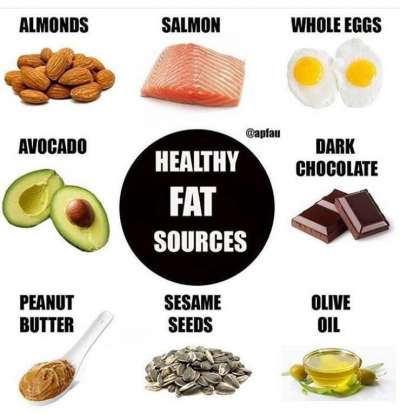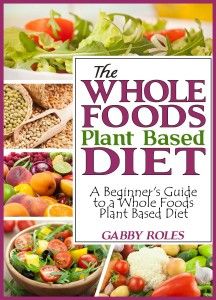
A pescatarian vegetarian refers to a vegetarian who eats seafood. Pescatarians can not eat any other type of meat or animal product. Pescatarians account for approximately 3% of all adults around the world. Find out more about this diet. A pescatarian has many benefits, including lower cholesterol levels and lower fat.
Fish
Fish consumption has many health benefits, including a vegetarian pescatarian diet. This diet can help you lower your BMI and avoid many of the environmental and ethical problems associated with eating meat. It also adds a bit of extra nutrition to your diet. Be sure to check with your doctor first before making any dietary changes.
One of the main benefits of eating fish is its excellent source of protein. There are many other sources of protein for vegetarians and vegans.

Eggs
Eggs are a great source of protein and should be considered part of a vegetarian diet. According to The Cleveland Clinic, an egg contains between 6-8g protein and 70 calories. Flexitarians, who are meat-eaters but include plant-based meals in the diet, can also consume eggs. Although they are mostly vegetarian, pescatarians still eat fish or shellfish.
Eggs are a versatile and cheap source of protein. A healthy person can eat one to three eggs per week. They are also a good source of protein, meaning they contain all nine essential amino acid. Eggs are also a great source of vitamins, minerals, and choline. This is critical for brain function.
Dairy
A pescatarian is a vegetarian who avoids meat but eats shellfish, eggs, and fish. This is the most popular type of vegetarian diet. This diet is suitable and will satisfy the nutritional needs of most people. The major difference between a lacto vegetarian or a pescatarian is that they eat dairy and eggs, while the latter doesn't.
The pescatarian diet includes fish, but it can also include nuts and legumes. Pescatarian diets can provide sufficient protein, provided they are well-planned. This diet is a good alternative to American eating habits, which are dominated by processed foods, saturated oils, and large amounts of meat.

Veggie Kickstart
Veggie Kickstart is the perfect program for vegetarian pescatarians or anyone who wants to eat a healthier diet. The 30-day plan features a new recipe, meal plan, and a grocery list that you can copy and keep. The app offers mix-and match lunch guides, which show you how you can create healthy lunches from ingredients in your pantry.
FAQ
What is the best diet for me?
Your age, gender, body type, and lifestyle choices will all impact the best diet. It's also important to consider how much energy your exercise consumes, whether you prefer low-calorie meals, and if fruits and veggies are something you enjoy.
Intermittent fasting might be an option for you if your goal is to lose weight. Intermittent eating means you only eat specific meals throughout the day. It's not like three big meals. You may find that this method works better for you than traditional diets that include daily calorie counts.
Studies have shown that intermittent fasting can improve insulin sensitivity and decrease inflammation. This could lead to lower blood sugar levels and a reduced risk of developing diabetes. Other research suggests that intermittent fasting may promote fat loss and improve overall body composition.
Exercise: Good for immunity or not?
Exercise is good for your immune systems. Exercise increases white blood cell production, which helps fight off infection. You also eliminate toxins. Exercise helps prevent diseases like cancer and heart disease. Exercise also helps to reduce stress levels.
But, too much exercise can lead to a weakening of your immune system. You can cause muscle soreness by working out too hard. This can cause inflammation, swelling, and even death. Your body then needs to make more antibodies in order to fight infection. The problem is that these extra antibodies can cause allergies and autoimmune disorders.
So, don't overdo it!
What are 10 healthy behaviors?
-
Breakfast is a must every day.
-
Don't skip meals.
-
Keep a balanced diet.
-
Drink lots of water.
-
Take care of yourself.
-
Get enough rest.
-
Stay away from junk food.
-
Do some type of exercise daily.
-
Have fun
-
Make new friends
How much should I weigh for my height and age? BMI calculator & chart
Calculating your body mass index (BMI), is the best method to calculate how much weight to lose. Healthy BMI ranges between 18.5 to 24.9. Weight loss is possible if you aim to lose approximately 10 pounds per week. Simply enter your height/weight into the BMI calculator.
This BMI chart shows you if it is possible to identify if you are either overweight or obese.
What is the working principle of an antibiotic?
Antibiotics kill harmful bacteria. The treatment of bacterial infections is done with antibiotics. There are many different types of antibiotics. Some can be taken orally, others are injected and some are applied topically.
For people who have been exposed, antibiotics are often prescribed. One example is if someone has had chickenpox and wants to prevent shingles. For those with strep-thorphritis, an injection of penicillin could be given to prevent them from getting pneumonia.
When antibiotics are given to children, they should be given by a doctor. Children are more likely to experience side effects than adults from antibiotics.
Diarrhea, the most common side-effect of antibiotics, is probably diarrhea. Side effects of antibiotics include diarrhea, stomach cramps and nausea. These side effects typically disappear once treatment is complete.
Statistics
- According to the 2020 Dietary Guidelines for Americans, a balanced diet high in fruits and vegetables, lean protein, low-fat dairy and whole grains is needed for optimal energy. (mayoclinichealthsystem.org)
- WHO recommends reducing saturated fats to less than 10% of total energy intake; reducing trans-fats to less than 1% of total energy intake; and replacing both saturated fats and trans-fats to unsaturated fats. (who.int)
- This article received 11 testimonials and 86% of readers who voted found it helpful, earning it our reader-approved status. (wikihow.com)
- According to the Physical Activity Guidelines for Americans, we should strive for at least 150 minutes of moderate intensity activity each week (54Trusted Source Smoking, harmful use of drugs, and alcohol abuse can all seriously negatively affect your health. (healthline.com)
External Links
How To
What does the meaning of "vitamin?"
Vitamins are organic compounds that can be found in foods. Vitamins allow us to absorb nutrients from food. Vitamins cannot be made by the body; they must be taken from food.
There are two types vitamins: water soluble or fat soluble. Water soluble vitamins dissolve easily in water. You can find vitamin C,B1 or thiamine, B2 or riboflavin and B3 or niacin. B6 is pyridoxine. Folic acid, biotin and pantothenic are some examples. The liver and fat soluble vitamins are stored in fatty tissue. Vitamin D, E, K and A are some examples.
Vitamins are classified according their biological activity. There are eight major groups of vitamins:
-
A - Essential for healthy growth and health maintenance.
-
C is important for nerve function and energy production.
-
D - Essential for healthy teeth and bones.
-
E - Required for good vision, reproduction.
-
K - required for healthy muscles and nerves.
-
P – vital for building strong bones.
-
Q - Aids in digestion and absorption.
-
R - necessary for making red blood cells.
The recommended daily allowance (RDA) of vitamins varies depending on age, gender, and physical condition. The U.S. Food and Drug Administration, (FDA), sets the RDA value.
For example, the RDA for vitamin A is 400 micrograms per dayfor adults 19 years or older. However, pregnant women need 600 micrograms per day because it is important for fetal development. Children ages 1-8 require 900 micrograms per day. Infants under one year of age require 700 micrograms per day, but this amount decreases to 500 micrograms per day between 9 months and 12 months of age.
Children aged 1-18 require 800 micrograms of sugar per day, while those who weigh more than 1200 need 1000. For their nutritional needs, underweight children need 1200 mg per day.
Children between 4-8 years of age who have been diagnosed by anemia must consume 2200 micrograms daily of vitamin C.
2000 micrograms daily is required for adults over 50 to maintain their general health. Breastfeeding or pregnant women require 3000 micrograms per daily due to higher nutrient demands.
1500 micrograms are required daily by adults over 70 because they lose approximately 10% of their muscle each decade.
Women who are pregnant and lactating need more nutrients than the RDA. Pregnant women require 4000 micrograms daily during pregnancy, and 2500 micrograms every day after birth. Breastfeeding mothers require 5000 micrograms daily when breast milk production is occurring.